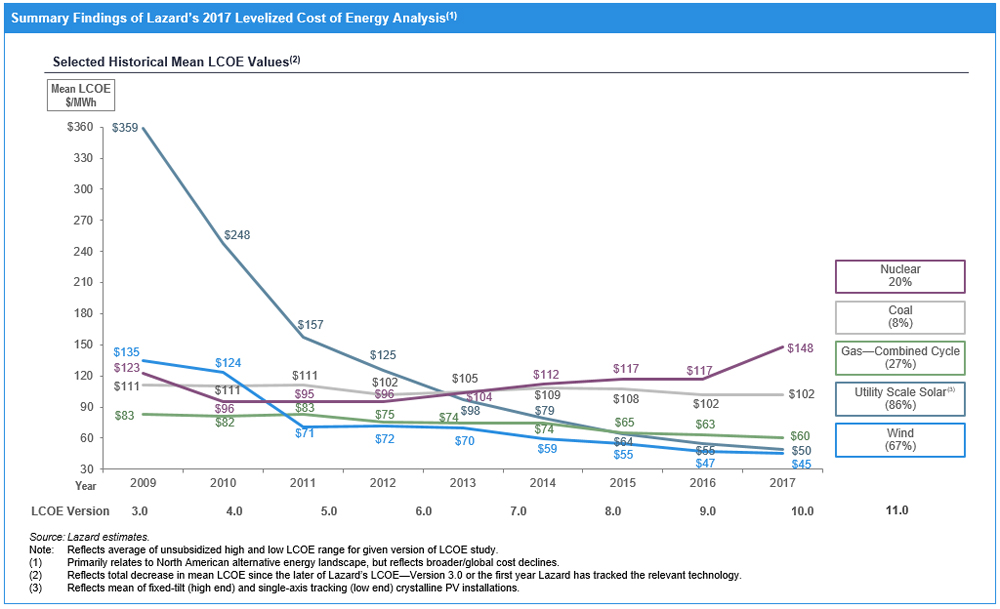Renewable energy is dirt cheap
Today’s good news is that renewable energy sources such as utility-scale wind and solar are now cheaper than all conventional energy sources.
 source
source
This is determined using a metric called the levelized cost of energy (LCOE), which takes into account the total lifecycle cost to produce one unit of energy to meet typical demand. Conventional sources examined include coal, natural gas turbines, diesel, and nuclear. Prices have dropped much faster than expectation, and in fact the 2017 LCOE is already below the 2020 estimate produced by the US Energy Information Administration in 2015.
There are still problems to be solved, as renewables cannot be activated on demand and so require storage to meet demand. However, this might not be as big of a problem as some suggest. Wind generally produces the most energy in the winter and at night, while solar peaks during the day and during the summer. Thus, they compliment each other over both daily and seasonal cycles. In addition, prices are now so cheap that current renewables+storage are competitive with natural gas peaker plants, which are currently one of the cheapest conventional load-balancing energy technologies.
One last exciting point is that this development is not limited to the developed world. India is building some of the largest solar plants in the world, as it makes sense both economically and environmentally. Thus, we could increase living standards across the world while still hitting global emissions targets to mitigate the effect of climate change.